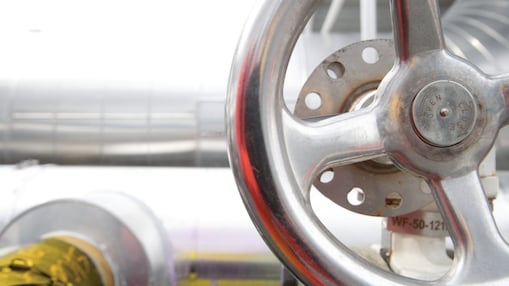Facts About Falcon Pipeline
The Falcon Pipeline connects three major ethane source points: Houston, Pa., Scio, Ohio and Cadiz, Ohio, in the rich gas portions of the Marcellus and Utica shale reservoirs.
Building new and Reliable Infrastructure
Shell Pipeline constructed, owns and operates the Falcon Ethane Pipeline System, a 97-mile common carrier ethane pipeline located in Southwestern Pennsylvania, West Virginia and Eastern Ohio.
The Falcon Pipeline connects three major ethane source points: Houston, Pa., Scio, Ohio and Cadiz, Ohio, in the rich gas portions of the Marcellus and Utica shale reservoirs.
The pipeline is located in a key area as more than 70 percent of the North American polyethylene market sits within a 700-mile radius of Pittsburgh.
The mostly 12-inch pipeline enhances ethane supply with new and reliable infrastructure while keeping safety as the top priority.
We worked with private, public and corporate landowners to acquire right of way easements to construct this pipeline. Routing is a discussion and agreement with local landowners, taking into account their property concerns.
Engaging with Communities
Shell Pipeline has a proven track record of operating safely and responsibly - and remains committed to engaging with local communities.

Shell Pipeline is committed to Safety and the Environment
- The Falcon Pipeline route was selected to limit impacts to the community, in consultation with landowners and other community members, paralleling existing right of ways when possible.
- Shell conducted numerous studies early in the project – including wetland and stream delineations, traffic, noise, geotechnical testing, impact area mapping, cultural investigations and analyses of potential impacts to rare, threatened and endangered species – as part of route selection and permit submissions.
- Horizontal directional drilling (HDD) was used to protect more sensitive areas during crossings. This limited surface disturbance in sensitive areas.
- All pipe, which is buried at a minimum depth of 4 feet, is rated for nearly twice the expected operating pressure, and three times what’s needed on HDD sections.
- The pipe is pressure-tested during manufacturing and in the field, and every weld is X-rayed or automatic ultrasonic tested.
- Pipeline integrity is maintained through cathodic protection, 24/7 electronic monitoring and routine right of way inspections.
- Valves are located to optimize emergency response and can be operated remotely from a 24/7, state-of-the-art response center.
- Ongoing emergency response planning and training will be conducted with local and county first-responders and managers.
- Right of way restoration is focused on vegetative growth and slope stabilization.
- Regular ground and aerial surveys continue along the pipeline route during operation.
Frequently asked questions
Q: What does the pipeline transport
Q: What does the pipeline transport
The pipeline transports ethane.
Q: What is ethane?
Q: What is ethane?
Ethane, like propane and butane, it is a natural gas liquid (NGL) found in certain natural gas deposits, including the Marcellus and Utica Shale formations. NGLs are separated from natural gas and used for a variety of industrial, residential and commercial uses. Ethane is primarily used to create ethylene.
Q: Is the pipeline safe?
Q: Is the pipeline safe?
Yes, safety is the top priority for Shell during planning, construction and operation of the Falcon Pipeline. Pipelines are the safest method of transporting energy. The pipe used in Falcon, which is buried at a minimum depth of 4 feet, is rated for nearly twice the expected operating pressure. It is pressure tested during manufacturing and in the field, and every weld has been tested. Pipeline integrity is maintained through cathodic protection, 24/7 electronic monitoring and routine right of way inspections. Valves are located to optimize emergency response, and is operated remotely, state-of-the-art response center.